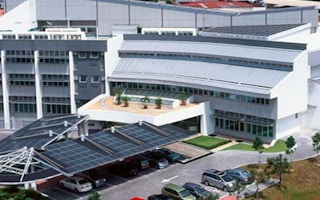Malaysia is firming up its position as one of the largest solar panel producing nations and overtaking much larger competitor nations as world-class companies start to expand their capacities in Malaysia.
Deputy Minister of International Trade and Industry Datuk Mukhriz Mahathir said through government efforts, many world-class companies have started solar manufacturing operations in Malaysia.
With incentives such as a 15-year tax holiday for solar company profits, low interest rates and good infrastructures like the Kulim Hi-Tech Park, Malaysia has become a favoured destination for foreign direct investments, he said.
“The reasons behind Malaysia’s success are manifold. The government gives support in the form of tax breaks, loans and clear regulations,” he said at the First Solar Malaysia Sdn Bhd’s Three Gigawatts (3GW) Milestone Celebrations at the first solar plant at Kulim Hi-Tech Park here today.
Mukhriz said today’s event was in line with the government’s policy to facilitate green technology industry growth and enhance its contribution to the national economy.
Mukhriz said First Solar was the first solar module manufacturing plant in Malaysia but within four years, it has turned from a single plant in 2008 to six plants fully ramped up by middle of this year.
“Workforce has grown from 109 employees in 2007 to about 3,500 workers of last month. Currently, it is the largest single site for thin-film solar module manufacturing in the world, with 1.62GW capacity power worth of solar panels a year and most importantly, it has contributed RM3.45 billion to the local economy since starting operations.
“Today, First Solar (Malaysia) Sdn Bhd has reached an accumulative production of 3,000MW (megawatt) (more than 38,000 solar panels output).
“I was informed this was achieved within three years of production compared to other plants which took six to eight years,” he said.
Mukhriz said the government was committed in ensuring that Malaysia provided the best environment for investments, both domestic and foreign to thrive.
“Malaysia is in the fight against climate change. We are committed to reduce our carbon emissions. Our Prime Minister (Datuk Seri Najib Tun Razak) has envisioned green technology as the new growth engine for Malaysia.
“The National Green Technology Policy has been formulated,” he said.
Mukhriz said Malaysia foresee that green technology would help Malaysia remain competitive in the international marketplace as global demand for environmentally sound products increased.
“Furthermore, our prime minister has also said green development strategies are not only due to economic considerations but we also have a moral obligation to leave behind an ecosystem that future generations can live in,” he said.
With an abundance of solar energy, it was no surprise that solar energy has time and again been harnessed to meet mankind’s growing needs, he aaid.
At a media conference later, Mukhriz said 100 per cent local manpower at First Solar Malaysia proved Malaysia’s success as an investment destination that could compete with other countries particularly through manpower capacity.
“This can be an attraction to other foreign investors to come to Malaysia. The types of jobs offered are now more towards highly skilled, something expected by the government,” he added.








